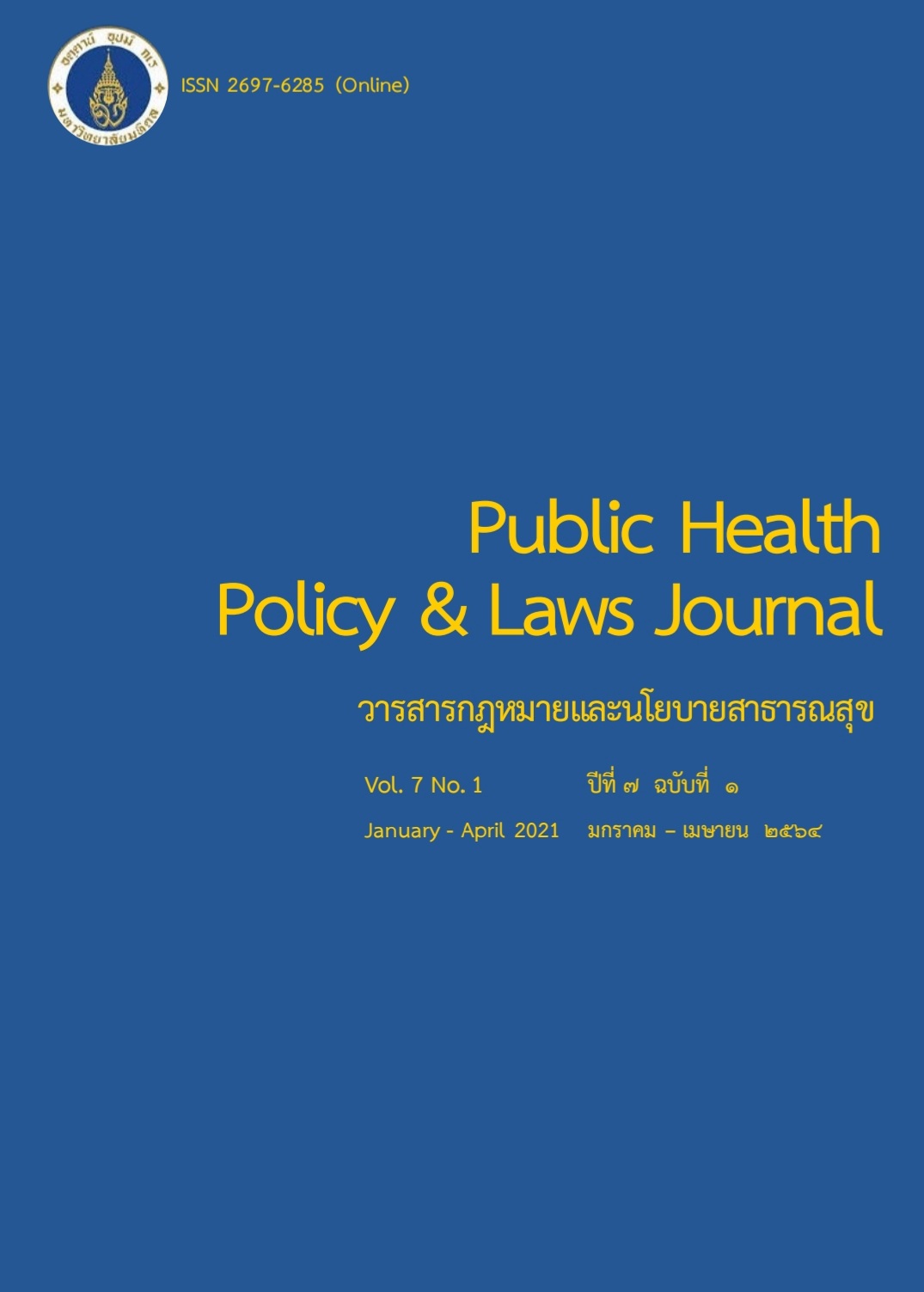Self-protection behavior of COVID-19: A Case Study of Students at Kasetsart University, Chalermphrakiat Campus, Sakon Nakhon Province
Keywords:
behavior, COVID-19, self-protectionAbstract
This research was a cross-sectional study with the aim of studying the knowledge, attitude, and self-protection behaviors of COVID-19, among students at Kasetsart University, Chalermphrakiat Campuse, Sakon Nakhon Province. Data were collected from a sample of 221 students. Descriptive statistics were analyzed for frequency, mean, standard deviation, maximum and minimum. Inferred statistics used were Independent Sample t-test and Pearson’s correlation coefficient.
Results indicated that 69.23% were females, with 30.77% were 21 years of age. General knowledge of COVID-19 was at a high level, 59.94%. The attitude on COVID-19 prevention was at a good level, 56.56%, and self-protection behaviors of COVID-19 was at a good level, 50.68%. Comparing the mean scores of self-protection behavior of COVID-19, there was a statistically significant difference in gender (t=-5.136, p<0.001), while there was no statistically significant difference among those who have and who have no personal illnesses (t=1.887, p=0.060). The results of this study can be used as a guideline for considering measures to promote and prevention of COVID-19 infection within educational institutions, or within universities. Moreover, results can be used for developing health promoting universities.
References
กรมควบคุมโรค กระทรวงสาธารณสุข. (2563). โรคติดเชื้อไวรัสโคโรนา 2019 (COVID-19). เข้าถึงได้จาก https://ddc.moph.go.th/viralpneumonia/.
กรมอนามัย กระทรวงสาธารณสุข. (2563). คู่มือการปฏิบัติสำหรับสถานศึกษาในการป้องกันการแพร่ระบาดของโรคโควิด 19 พิมพ์ครั้งที่ 1. พิมพ์ที่ บริษัท คิว แอดเวอร์ไทซิ่ง จำกัด.
ธานี กล่อมใจ, จรรยา แก้วใจบุญ, & ทักษิกา ชัชวรัตน์. (2563). ความรู้และพฤติกรรมของประชาชนเรื่องการป้องกันตนเองจากการติดเชื้อไวรัสโคโรนา สายพันธุ์ใหม่ 2019. วารสารการพยาบาล การสาธารณสุขและการศึกษา, 21(2), 29-39. เข้าถึงได้จาก https://he01.tci-thaijo.org/index.php/bcnpy/article/view/243309
ปราโมทย์ ถ่างกระโทก. (2563). เผยผลสำรวจความรอบรู้ด้านสุขภาพเพื่อป้องกันโควิด-19 ยังเข้าใจผิดเรื่องงดออกจากบ้าน. เข้าถึงได้จาก https://www.hfocus.org/content.
สวรรยา สิริภคมงคล, อิศรา ศิรมณีรัตน์, & ราญ สิริภคมงคล. (2561). เปรียบเทียบพฤติกรรมการป้องกันโรคไข้หวัดใหญ่ ระหว่างผู้ป่วยโรคเรื้อรังกับผู้ป่วยอื่นๆ ที่มารับบริการผู้ป่วยนอก กรณีศึกษาจังหวัดนครสวรรค์. สำนักงานป้องกันควบคุมโรคที่ 7 ขอนแก่น, 25(3), 1-10.
สำนักงานสาธารณสุขจังหวัดสกลนคร. (2563). รายงานจำนวนผู้ติดเชื้อไวรัสโควิด-19. เข้าถึงได้จาก https://www.skko.moph.go.th/dward.
อมร ลีลารัศมี. (2563). ความรู้ของโรคติดเชื้อไวรัสโคโรน่า สายพันธุ์ใหม่ สำหรับแพทย์. เข้าถึงได้จาก
https://tmc.or.th/pdf/tmc_knowlege-26.pdf.
อวาทิพย์ แว. (2563). COVID-19 กับการเรียนรู้สู่การปรับเปลี่ยนพฤติกรรมในวันนี้. วารสารสมาคมวิชาชีพสุขศึกษา, 35(1), 24-107.
ฮูดา แวหะยี. (2563). การรับรู้ความรุนแรงและพฤติกรรมการป้องกันโรคติเชื้อไวรัสโคโรน่า 2019 (โควิด-19) ของวัยรุ่นในเขตตำบลสะเตงนอก อำเภอเมือง จังหวัดยะลา. วารสารวิชาการสาธารณสุขชุมชน, 6(4), 158-168.
World Health Organization. (2020a). Coronavirus disease (COVID-19) pandemic. เข้าถึงได้จาก https://www.who.int/emergencies/diseases/novel-coronavirus-2019.
World Health Organization. (2020b). WHO Coronavirus Disease (COVID-19) Dashboard. เข้าถึงได้จาก https://who.sprinklr.com/.
Downloads
Published
How to Cite
Issue
Section
License
Disclaimer and Copyright Notice
The content and information presented in articles published in the Journal of Law and Public Health Policy represent the opinions and sole responsibility of the respective authors. The editorial board does not necessarily agree with or assume any responsibility for the views expressed.
All articles, data, content, images, and other materials published in the Journal of Law and Public Health Policy are the intellectual property of the journal. Any individual or organization wishing to reproduce, distribute, or otherwise use the entirety or any part of such materials must provide proper citation.





